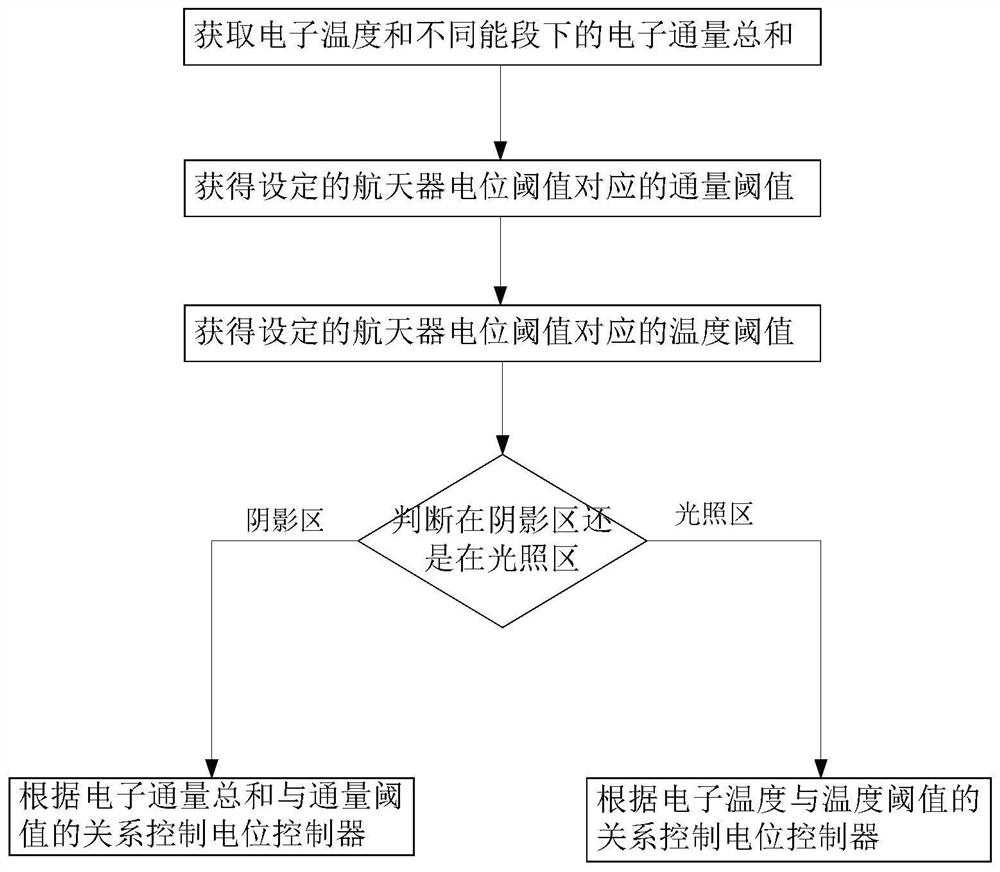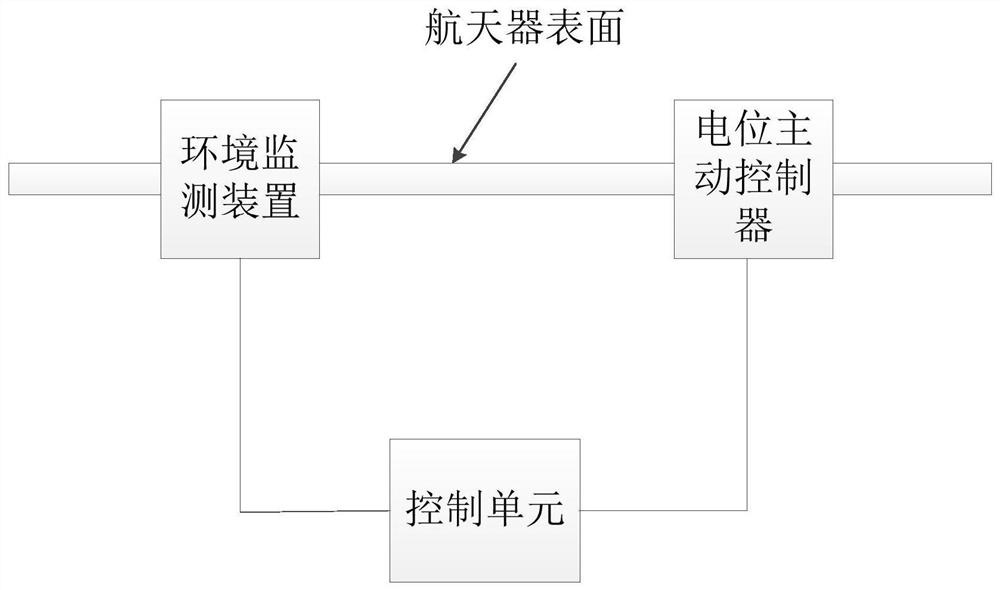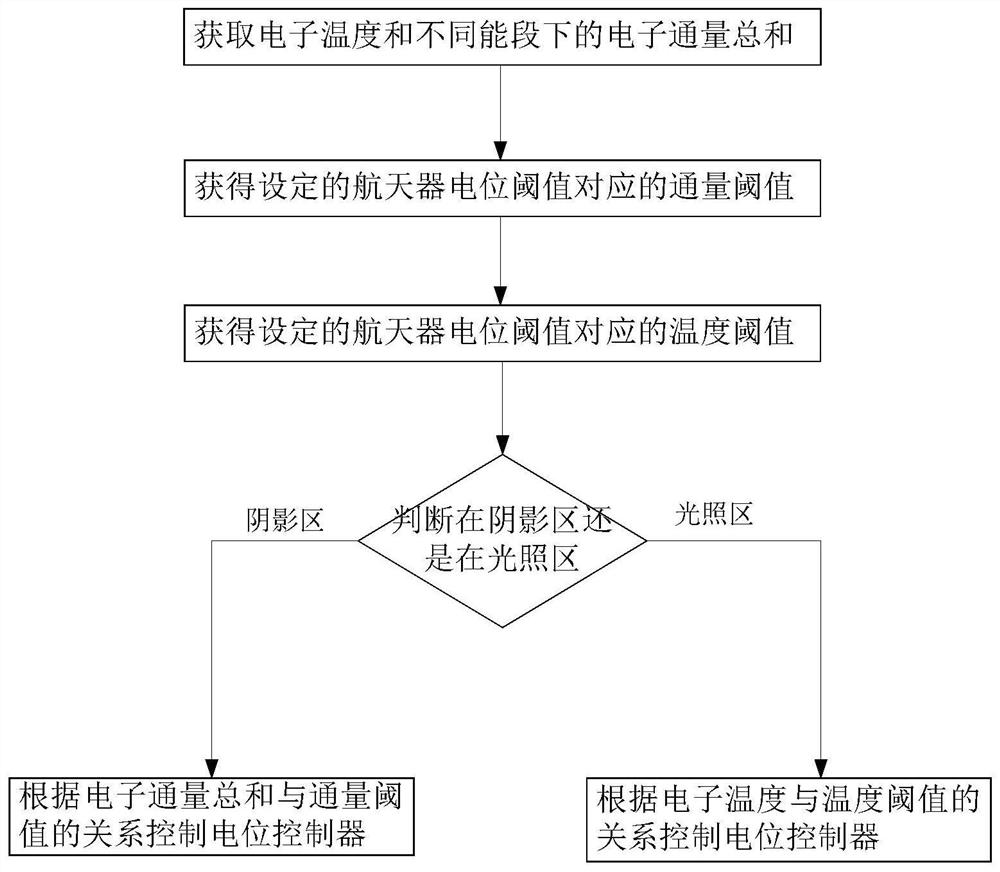A method for controlling the electrification effect on the surface of a spacecraft in orbit
A control method and technology for spacecraft, which are used in aerospace vehicles, radiation protection devices for aerospace vehicles, aircraft, etc., can solve the problems of reducing surface charge, serious hysteresis, and delay, and achieve a wide range of applications. , improve stability and accuracy, improve the effect of response speed
- Summary
- Abstract
- Description
- Claims
- Application Information
AI Technical Summary
Problems solved by technology
Method used
Image
Examples
Embodiment Construction
[0023] The present invention will be described in detail below with reference to the accompanying drawings and examples.
[0024] A kind of spacecraft surface electrification control method of the present invention, such as figure 1 As shown, the electron flux and plasma temperature irradiated to the surface of the spacecraft are detected; when the spacecraft is in the shadow area, when the electron flux is higher than the preset threshold, the trigger potential active controller is turned on, and when the electron flux is lower than When the preset threshold is reached, the trigger potential active controller is turned off; when the spacecraft is in the light zone, when the plasma temperature is higher than the preset value, the trigger potential active controller is turned on, and when the plasma temperature is lower than the preset flux, the trigger The potentiometric active controller is switched off. The beam emission intensity of the potential active controller can also...
PUM
 Login to View More
Login to View More Abstract
Description
Claims
Application Information
 Login to View More
Login to View More - R&D
- Intellectual Property
- Life Sciences
- Materials
- Tech Scout
- Unparalleled Data Quality
- Higher Quality Content
- 60% Fewer Hallucinations
Browse by: Latest US Patents, China's latest patents, Technical Efficacy Thesaurus, Application Domain, Technology Topic, Popular Technical Reports.
© 2025 PatSnap. All rights reserved.Legal|Privacy policy|Modern Slavery Act Transparency Statement|Sitemap|About US| Contact US: help@patsnap.com



